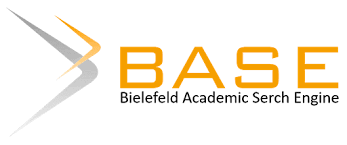EFEKTIVITAS METODE BLENDED LEARNING DALAM MENINGKATKAN KEMAMPUAN SISWA DALAM MENGUASAI MATERI SENI BUDAYA NUSANTARA KELAS X TKJ 1 SMK NEGERI 1 DENPASAR
DOI:
https://doi.org/10.59672/widyadari.v26i2.5560Keywords:
Blended Learning, Art and Culture, Nusantara Art, Learning Achievement, Student EngagementAbstract
This study aims to determine the effectiveness of the Blended Learning method in improving students’ ability to master the material on analyzing works of Nusantara art and culture in class X TKJ 1 at SMK Negeri 1 Denpasar. It also aims to describe how the implementation of Blended Learning affects student motivation and engagement in learning. Blended Learning is an instructional approach that combines face-to-face learning with online learning, offering flexibility, interactivity, and a student-centered learning environment. This research is a Classroom Action Research (CAR) conducted in two cycles, with each cycle consisting of planning, action, observation, and reflection stages. The research subjects were 32 students from class X TKJ 1 SMK Negeri 1 Denpasar in the 2024/2025 academic year. Data collection techniques included learning achievement tests, student response questionnaires, and observation sheets. The results showed that the implementation of the Blended Learning method effectively improved student learning outcomes. The average score increased from 64.78 in the pre-cycle to 73.28 in cycle I, and reached 83.53 in cycle II. Additionally, students' learning responses improved significantly, as indicated by increased observation scores and positive questionnaire results in each cycle. These findings confirm that Blended Learning is effective in enhancing both the cognitive abilities and affective engagement of students in the subject of Art and Culture. Therefore, Blended Learning can be considered an effective alternative strategy for improving the quality of Art and Culture education, particularly in the context of 21st-century learning that demands the integration of technology and adaptive approaches.
Downloads
References
Arikunto, S. (2010). Prosedur Penelitian: Suatu Pendekatan Praktik (Edisi Revisi). Jakarta: Rineka Cipta.
Arikunto, Suharsimi. 2013. ProsedurbPenelitian Suatu Pendekatan Praktik. Jakarta: PT Rineka Cipta
Afrian, R. 2014. Pengaruh Pembelajaran Blende Learning terhadap hasil Belajar siswa SMA. Tesis Tidak Diterbitkan. Malang: Pascasarjana Universitas Negeri Malang.
Dewi, C. A. 2012. Pengaruh Blended Learning dalam Pembelajaran Berbasis Masalah (PBL) Terhadap Hasil Belajar Mahasiswa Prodi Pendidikan Kimia IKIP Mataram Tahun Akademik 2011/2012 Pada Materi Pencemaran Lingkungan. Malang: Universitas Negeri Malang.
D. Dwiyogo. 2018. Pembelajaran Berbasis Blended Learning. Depok: PT RajaGrafindo.
Eri Ariesca Sari. 2016. Penerapan Mmode Blended Learning Untuk Meningkatkan Keaktifan Belajar Pada Mata Pelajaran TIK Siswa Kelas XI IPS SMA Negeri 2 Salat Tiga. tersedia: http://repository.uksw.edu.id. diunduh 10 Januari 2021
Garrison, D. R., & Vaughan, N. D. (2008). Blended Learning in Higher Education: Framework, Principles, and Guidelines. San Francisco: Jossey-Bass.
Graham, C. R. (2006). Blended Learning Systems: Definition, Current Trends, and Future Directions. In C. J. Bonk & C. R. Graham (Eds.), The Handbook of Blended Learning: Global Perspectives, Local Designs (pp. 3–21). San Francisco: Pfeiffer Publishing.
Kemendikbud. (2003). Undang-Undang Republik Indonesia Nomor 20 Tahun 2003 tentang Sistem Pendidikan Nasional. Jakarta: Kementerian Pendidikan Nasional.
Miarso, Y. (2004). Menyemai Benih Teknologi Pendidikan. Jakarta: Kencana.
Narbuko, Cholid dan H. Abu Achmadi. 2012. Metode Penelitian. Jakarta: Bumi Askara
Kantun Sri, Siswandini ASP Raras. 2016. Implementasi Blended Learning untuk meningkatkan kretifitas dan hasil Belajar pada Mata Pelajaran Ekonomi Peserta Didik Kelas XI IPS-2 SMAN 5 Jember Semester Gasal Tahun 2015/2016
Sugiyono. (2017). Metode Penelitian Pendidikan (Pendekatan Kuantitatif, Kualitatif, dan R&D). Bandung: Alfabeta.
Syahril, I. (2020). Guru di Masa Pandemi: Menjawab Tantangan Pembelajaran Jarak Jauh. Diakses dari https://gtk.kemdikbud.go.id
Downloads
Published
How to Cite
Issue
Section
License
Copyright (c) 2025 Widyadari

This work is licensed under a Creative Commons Attribution-NonCommercial-ShareAlike 4.0 International License.
Hak cipta mencakup hak eksklusif untuk mereproduksi dan mengirimkan artikel ini dalam semua bentuk dan media, termasuk mencetak ulang, memotret, mikrofilm dan reproduksi serupa lainnya, serta terjemahannya. Reproduksi dari bagian manapun dari jurnal ini, penyimpanannya di database dan transmisinya dengan bentuk atau media apa pun, seperti salinan elektronik, elektrostatik dan mekanis, fotokopi, rekaman, media magnetik, dan lain-lain, akan diizinkan hanya dengan izin tertulis dari penerbit jurnal.






1_(1).jpg)











